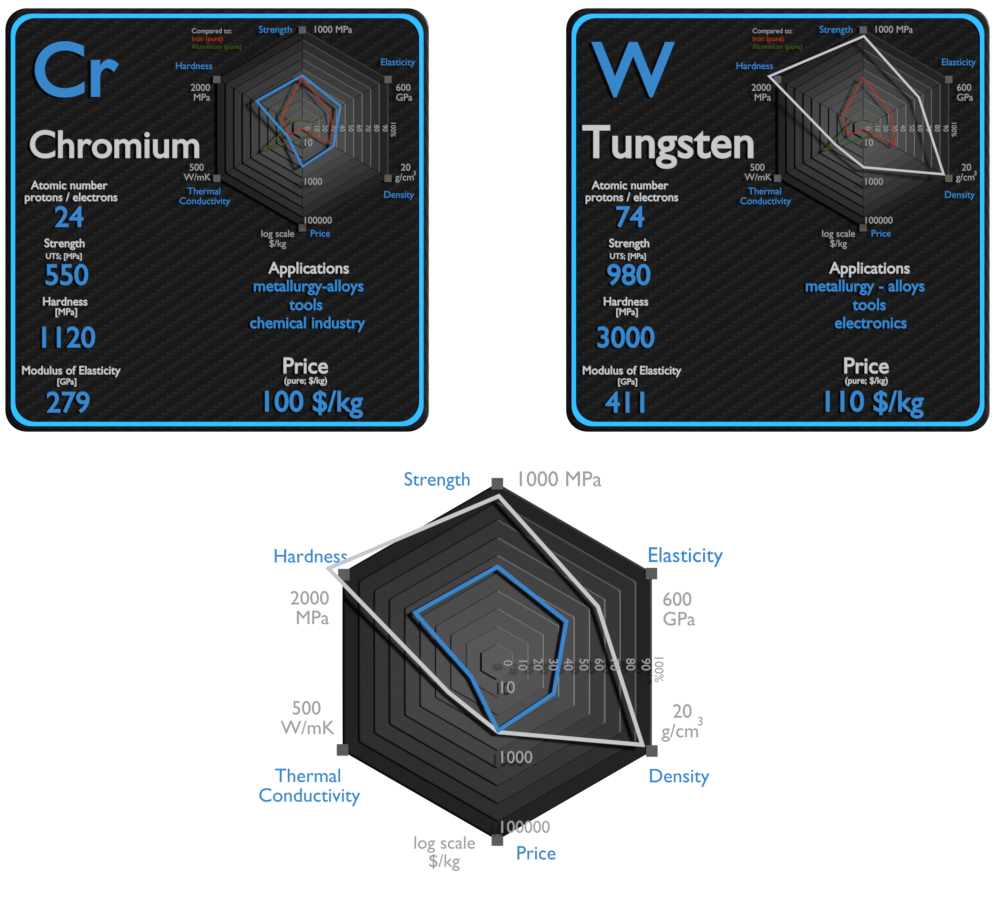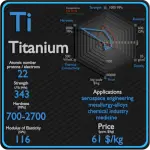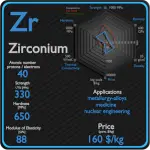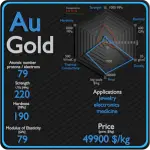This article contains comparison of key thermal and atomic properties of chromium and tungsten, two comparable chemical elements from the periodic table. It also contains basic descriptions and applications of both elements. Chromium vs Tungsten.

Chromium and Tungsten – About Elements


Source: www.luciteria.com
Chromium and Tungsten – Applications
Chromium
Chromium is one of the most important and indispensable industrial metals because of its hardness and resistance to corrosion. But it is used for more than the production of stainless steel and nonferrous alloys; it is also used to create pigments and chemicals used to process leather. In metallurgy, Chromium increases hardness, strength, and corrosion resistance. The strengthening effect of forming stable metal carbides at the grain boundaries and the strong increase in corrosion resistance made chromium an important alloying material for steel. Generally speaking, the concentration specified for most grades is approximately 4%. This level appears to result in the best balance between hardness and toughness. Chromium plays an important role in the hardening mechanism and is considered irreplaceable. At higher temperatures, chromium contributes increased strength. It is ordinarily used for applications of this nature in conjunction with molybdenum. The resistance of stainless steels is based on passivation. For passivation to occur and remain stable, the Fe-Cr alloy must have a minimum chromium content of about 11% by weight, above which passivity can occur and below which it is impossible.
Tungsten
Tungsten is widely used metal. Approximately half of the tungsten is consumed for the production of hard materials – namely tungsten carbide – with the remaining major use being in alloys and steels. Mining and mineral processing demand wear-resistant machines and components, because the energies and masses of interacting bodies are significant. For this purposes, materials with the highest wear-resistance must be used. For example, tungsten carbide is used extensively in mining in top hammer rock drill bits, downhole hammers, roller-cutters, long wall plough chisels, long wall shearer picks, raiseboring reamers, and tunnel boring machines. The remaining 40% is generally used to make various alloys and specialty steels, electrodes, filaments, wires, as well as diverse components for electric, electronic, heating, lighting, and welding applications. High-speed steels are complex iron-base alloys of carbon, chromium, vanadium, molybdenum, or tungsten (as much as 18%), or combinations there of.
Chromium and Tungsten – Comparison in Table
| Element | Chromium | Tungsten |
| Density | 7.14 g/cm3 | 19.25 g/cm3 |
| Ultimate Tensile Strength | 550 MPa | 982 MPa |
| Yield Strength | 131 MPa | 750 MPa |
| Young’s Modulus of Elasticity | 279 GPa | 411 GPa |
| Mohs Scale | 8.5 | 7.5 |
| Brinell Hardness | 1120 MPa | 3000 MPa |
| Vickers Hardness | 1060 MPa | 3500 MPa |
| Melting Point | 1907 °C | 3410 °C |
| Boiling Point | 2671 °C | 59300 °C |
| Thermal Conductivity | 93.7 W/mK | 170 W/mK |
| Thermal Expansion Coefficient | 4.9 µm/mK | 4.5 µm/mK |
| Specific Heat | 0.45 J/g K | 0.13 J/g K |
| Heat of Fusion | 16.9 kJ/mol | 35.4 kJ/mol |
| Heat of Vaporization | 344.3 kJ/mol | 824 kJ/mol |













